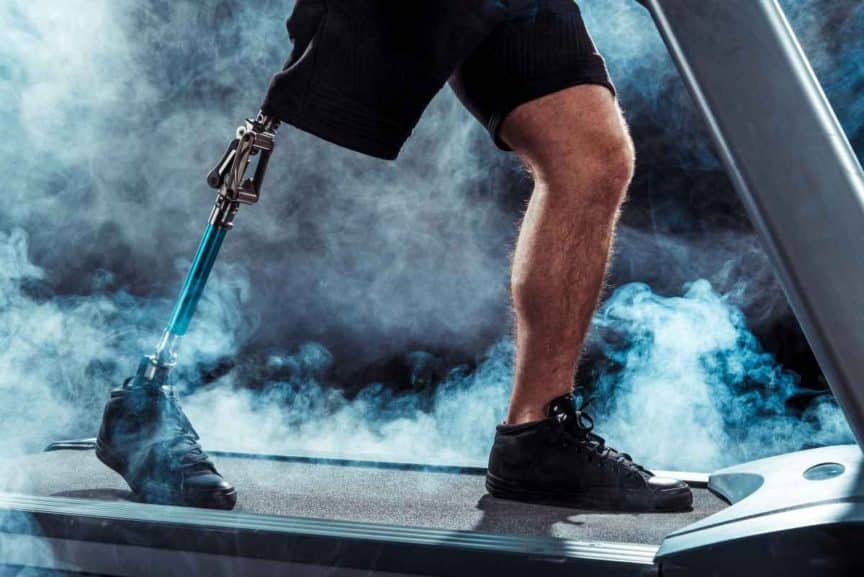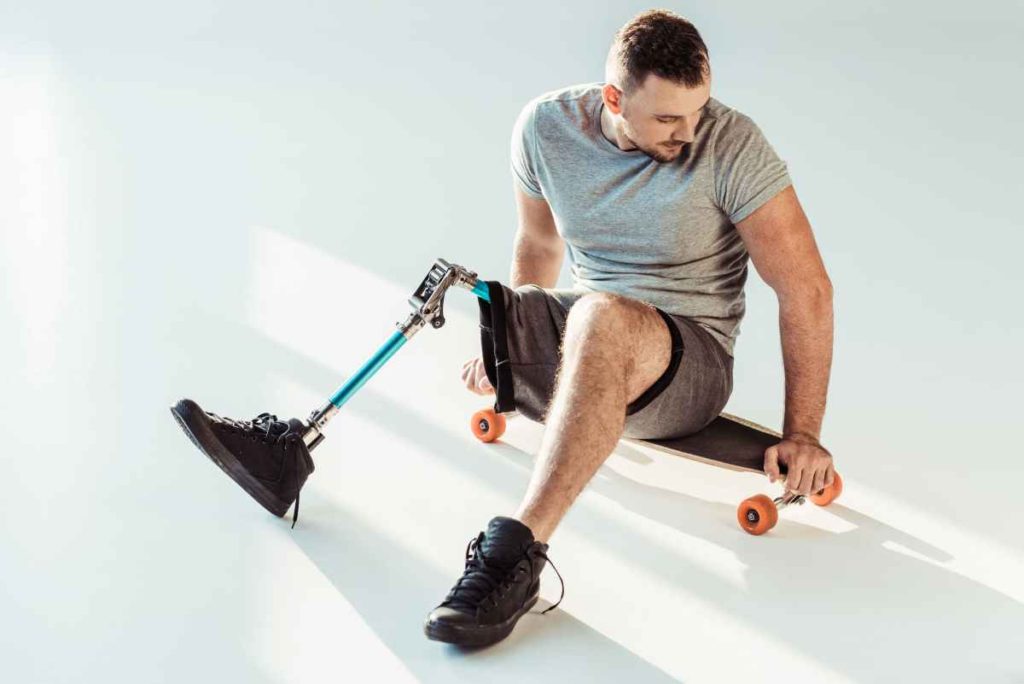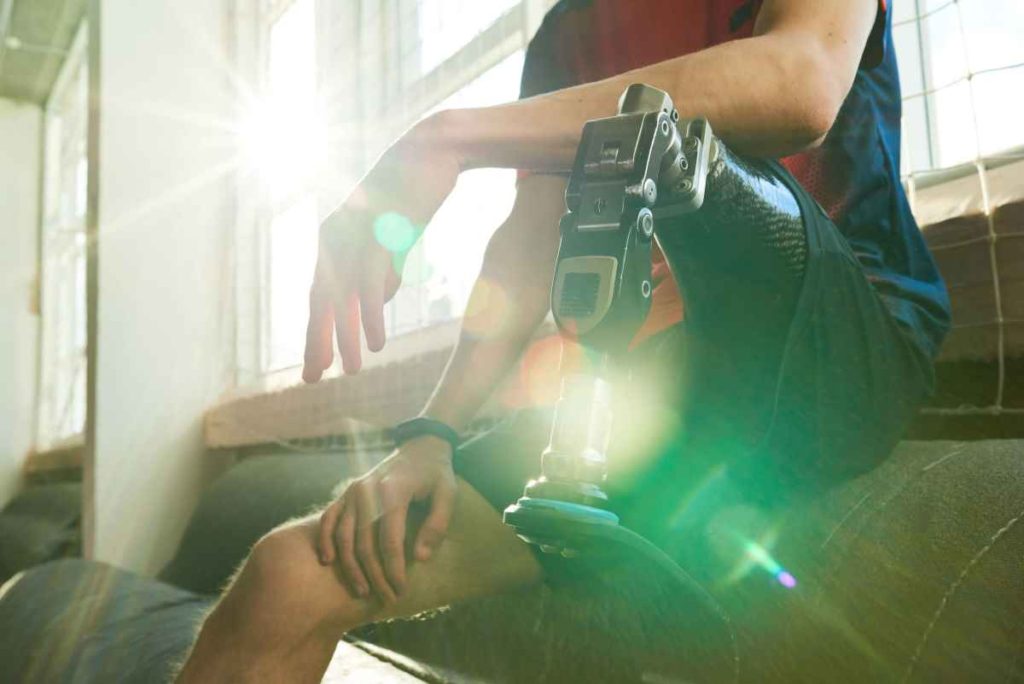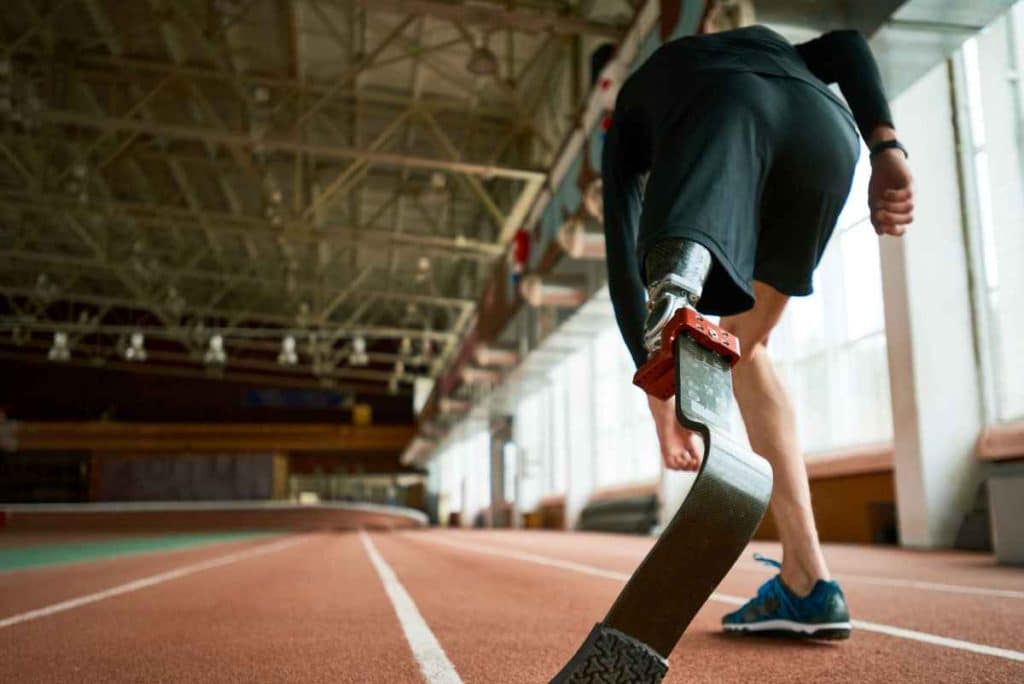Amputations within the United States are more common than many people often realize. In a country of roughly three-hundred-million people, approximately two-million are living with the loss of a limb (1). And with each passing year in the US, there are approximately 185,000 amputations that are performed (2).
With this volume of total and annual amputations occurring, physical therapists (who are often involved in the rehabilitation process after amputation) play a key role in the recovery process for these individuals.
Regardless of the body part that has been amputated, physical therapists help amputees regain function, reduce pain and help these individuals with all aspects of their prosthesis and recovery. This includes proper fit, maintenance and use in order to increase safety, comfort, confidence and functional ability.
To be able to provide such effective education and physical rehabilitation for the patient, physical therapists must be well-educated and prepared for the complexities and unique circumstances that arise when working with this particular population.
Nevertheless, us physical therapists are up to the task. But if you’re curious as to just what we have to know, and how we can help individuals with amputations, keep on reading!
Article Overview
- How physical therapists help amputees eliminate pain, improve their confidence and re-gain their functional abilities
- Physical therapists receive specific coursework and training for understanding amputations and prosthetics
- Physical therapists are educated on types of amputations and required rehabilitation for each type
- Physical therapists work in collaboration with prosthetists
How physical therapists help amputees eliminate pain, improve their confidence and re-gain their functional abilities
There’s a lot that goes into working with our patients who have amputations. Every amputation and amputee is unique, along with the circumstances surrounding the reason(s) why they’ve had an amputation (more on that later).
How physical therapists work to reduce an amputee’s pain
Pain (both immediately and not so immediately after) after an amputation is expected. What we as physical therapists must do is determine what is causing the pain. Pain arising from amputations can arise from external causes (prosthetic devices not fitting correctly, etc.), from internal causes (traumatized tissue, swelling, contracted tissue or funky neurological conditions such as phantom limb pain) or even a mixture of both.
Where and why the pain or issue is occurring will determine how we go about treating it. A big component in addition to the treatment methods that we employ for the patient revolves around education.
We educate the patient on as many aspects of their condition and the rehabilitative process as possible. This includes education topics such as what to expect immediately and long after the amputation, signs and symptoms of infection or other complications, the process of adapting to a new prosthetic device, how to properly use the device and much more.
How physical therapists restore functional mobility and confidence within the amputee
Getting pain under control is only one part of the battle. Amputations (depending on the type, location and individual factors of the amputee themselves) can create a wide range in variability regarding how much functional mobility and confidence are either retained or lost.
Learning how to walk with a prosthetic or strengthening a residual limb can be incredibly challenging for a variety of reasons. When it comes to physical therapy, rehabilitation must be focused around meeting both the patient’s needs and their personal goals.
High amounts of education in addition to physical rehabilitation are often required in order to not only meet these needs and goals, but also in order to ensure that the patient stays safe throughout their rehabilitation. A large part of safety comes not just from the amputee having adequate knowledge, but also having the confidence that they need when performing any and all of their daily physical tasks.
It’s common for mobility issues to arise around the amputated limb or around nearby regions that are affected by compensation. Physical therapists work to address these issues through a variety of treatment techniques in order to ensure that mobility around the affected joint(s) stays adequate.
Physical therapists receive specific coursework and training for understanding amputations and prosthetics
Much of the general population is unaware that physical therapists receive coursework and hands-on training for working with populations who have had an amputation. This includes coursework and training for different prosthetic devices in addition to individuals who have an amputation.
In order to be able to safely and effectively work with patients recovering from amputation(s), the physical therapist must have a strong academic knowledge on various aspects within this realm. This includes the types of traumas or diseases that led to the amputation, the unique challenges that arise with each and every type of amputation as well as the prosthetic device(s) that will be utilized by the patient throughout their recovery.
Unique conditions for populations who have had an amputation
An amputation of any body part may be required for an individual for a number of different reasons. They may be required due to sudden, traumatic injury, or they may be required after prolonged and on-going conditions and diseases (such as uncontrolled type-II diabetes) have compromised the affected area beyond recovery.
In addition to factors around the cause of the amputation, each individual who has received an amputation may have other unique, non-amputation related conditions that must be factored into their physical rehabilitation, depending on the situation. In physical therapy school, we are trained to understand how the underlying reason for the amputation along with other, non-directly-related factors can (and will) affect the rehabilitation process as a result.
We are also trained to understand how the actual amputation itself will factor into the recovery process, which will be discussed shortly.
Different types of prosthetic devices, how they work and how they must be used
In addition to the unique factors pertaining to an individual’s amputation and underlying condition, physical therapists receive didactic coursework along with hands-on training and practice for all aspects of prosthetic devices.
Physical therapists must be well-versed in understanding the various components that comprise prosthetic devices, how a prosthetic should be fit for a patient, how it must be worn, maintained and how to identify signs and symptoms that the prosthetic is not fitting properly or has not been calibrated properly.
In addition to these general abilities, physical therapists must also understand the different types of prosthetics that can be worn by the patient based on their overall health, functional abilities and insurance coverage.
Physical therapists are educated on types of amputations and required rehabilitation for each amputation type
Depending on which body part(s) are amputated, the patient who received the amputation will face unique challenges throughout their physical rehabilitation.
Amputations that have taken place beneath the knee (known as below-the-knee amputations or trans tibial amputations) will present different circumstances and individual challenges than amputations that have taken place at the toes, the foot or above the knee (known as above knee or trans femoral amputations).
The same is true for amputations of fingers, the hand or any portion of the arm.
It is therefore critical that physical therapists are well-versed in understanding the unique components of the physical rehabilitation program
Physical therapists work in collaboration with prosthetists
While physical therapists don’t design or customize the actual prosthetic device that the patient will be wearing (this is done by the prosthetist), the physical therapist must be extremely competent at identifying any issues that the patient may be having when wearing the device. This can include the device not fitting correctly, not being the correct length, being too soft or too firm, etc.
Since the prosthetist creates the prosthetic, but it’s largely the physical therapist that sees the patient using the device, a high level of collaboration occurs between the two professionals. If the device requires adjustments beyond what is capable or appropriate of the physical therapist, they will get in touch with the prosthetist while continuing to update them on the rehabilitative process.
Concluding remarks
Numerous aspects of amputations and prosthetics are taught to physical therapists while in school. This includes different types of amputations, challenges faced in the rehabilitative process by the patient and the various types, components and features of prosthetic devices themselves.
Physical therapists are also well-trained in the unique requirements that go into the rehabilitative process based on unique health factors and conditions of the individual patient. No two amputees are alike. This allows the physical therapist to provide a rehabilitative program that is more individualized (and thus meaningful and effective) to the patient.
As a result, physical therapists are able to effectively treat not just the pain arising from the amputation, but also subsequent issues surrounding the issue. This treatment includes restoring or improving loss of mobility, restoring functional abilities (such as walking and other daily activities), gaining confidence with using the prosthetic device and education on all components of living with the prosthesis, which includes safety.
References
- Ziegler‐Graham K, MacKenzie EJ, Ephraim PL, Travison TG, Brookmeyer R. Estimating the Prevalence of Limb Loss in the United States: 2005 to 2050. Archives of Physical Medicine and Rehabilitation2008;89(3):422‐9.
- Owings M, Kozak LJ, National Center for Health S. Ambulatory and Inpatient Procedures in the United States, 1996. Hyattsville, Md.: U.S. Dept. of Health and Human Services, Centers for Disease Control and Prevention, National Center for Health Statistics; 1998.

Hi! I’m Jim Wittstrom, PT, DPT, CSCS, Pn1.
I am a physical therapist who is passionate about all things pertaining to strength & conditioning, human movement, injury prevention and rehabilitation. I created StrengthResurgence.com in order to help others become stronger and healthier. I also love helping aspiring students and therapists fulfill their dreams of becoming successful in school and within their clinical PT practice. Thanks for checking out my site!




